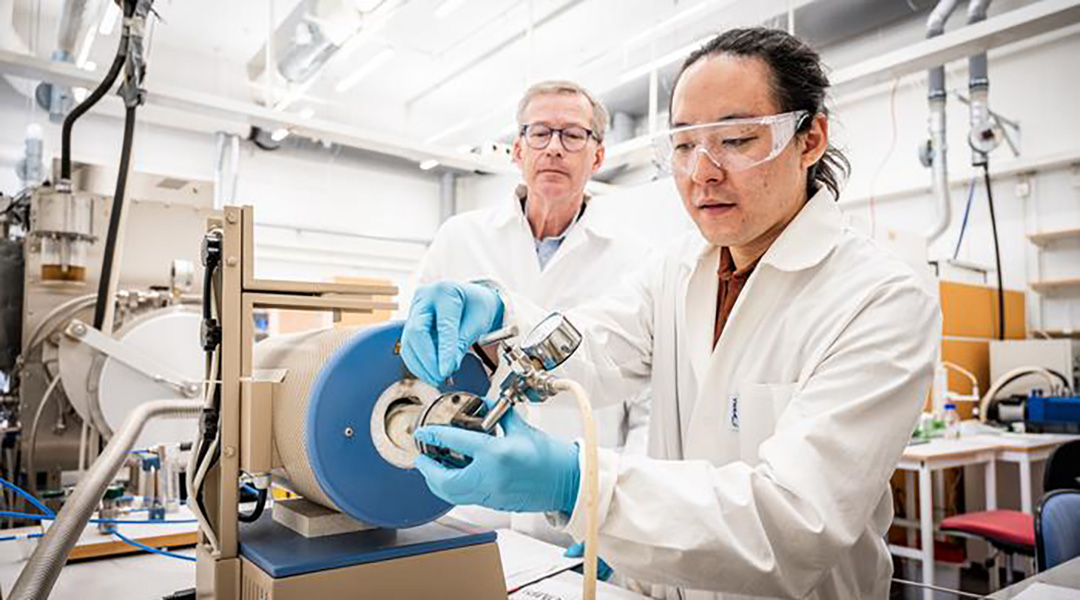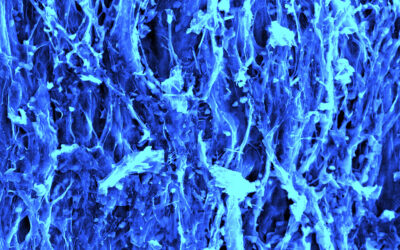Scientists have created single-atom-thick sheets of gold called goldene, a new material similar to the well-known graphene. “It’s the first demonstration of a 2D one-atomic-plane-thick metal sheet,” said Lars Hultman, professor of thin film physics at Linköping University and one of the researchers behind the development.
Gold is vital to many electronic technologies, but its bulk structure behaves differently compared to structures built on the micro- or nanoscale, which have unique physical and chemical properties. “Thus, the thinnest 2D gold, goldene, might possess new useful properties,” added Hultman.
Researchers have been attempting to create goldene for years, but previous successes were limited to free-standing layers that were several atoms thick or single layers that had to be confined to specific templates.
“Carbon, unlike metals, like to form atomic sheets,” explained Shun Kashiwaya, researcher at the Materials Design Division at Linköping University and another of the study’s authors. “Thus, graphene can be easily exfoliated from graphite that is composed of a series of stacked parallel layers with weak interlayer bonding. In contrast, metals, including gold, have a tendency to clump together, making it difficult to flatten them out atomically thin.”
The key to this breakthrough is a three-dimensional base material where gold is embedded between layers of titanium and carbon. The scientists created this by starting with a layered ceramic known as titanium silicon carbide (Ti3SiC2), which is structured like a stack of thin sheets. Using a process called intercalation, they introduced gold atoms into these layers, allowing them to fit between the sheets. This new arrangement resulted in a novel compound, Ti3AuC2, which was reported in a previous study and has unique properties due to the presence of gold in its structure.
This served as the foundation for further experimentation. “Hultman encountered a hundred-year-old method used by Japanese smiths called Murakami’s reagent, which was employed to etch away carbide residue in steel, but to which gold is relatively inert,” explained Kashiwaya. “We also realized that the etching must be conducted under darkness because light (even room light) would induce the formation of cyanide, which dissolves gold, from the reagent.”

“Yet, we observed a tendency for curling and clustering of the goldene layers during its exfoliation from Ti3AuC2,” he continued. “To keep the goldene sheets intact, we designed an original surfactant scheme for the etch, which made the goldene stable.”
Nano-laminated ceramics, such as Ti3SiC2, are called MAX phases, with “M” representing a transition metal (such as titanium in this case), “A” denoting an element (like gold), and “X” signifying carbon or nitrogen. These materials are commonly used as templates for creating two-dimensional MXenes, a class of layered materials with unique properties.
“[MXenes are important] 2D-material in their own right, which can be synthesized by etching away layers,” said Kashiwaya. The current approach to producing goldene inverted this concept to free the on-atom-thick layer of goldene from within the MX layers. “We freed goldene by etching away Ti3C2 layers from Ti3AuC2,” Kashiwaya added.
The scientists say they are working on improving the size of the goldene sheets they can recover — at the moment, they can produce sheets with an upper area limit of 200nm — and are working to improve yield as not all the goldene sheets can currently be recovered from the etching solution.
Goldene’s potential applications range from carbon dioxide conversion, hydrogen production, selective production of value-added chemicals, water purification, and the development of advanced sensors. But the team’s extraction method is not limited to just gold.
“Our developed method is quite facile and scalable,” said Hultman. “It might also be applicable to producing other 2D noble metals, such as Ir and Pt. […] The future seems golden.”
Reference: Shun Kashiwaya, Lars Hultman, et al., Synthesis of goldene comprising single-atom layer gold, Nature Synthesis (2024). DOI: 10.1038/s44160-024-00518-4
Feature image: Lars Hultman and Shun Kashiwaya in the lab. Credit: Olov Planthaber

















